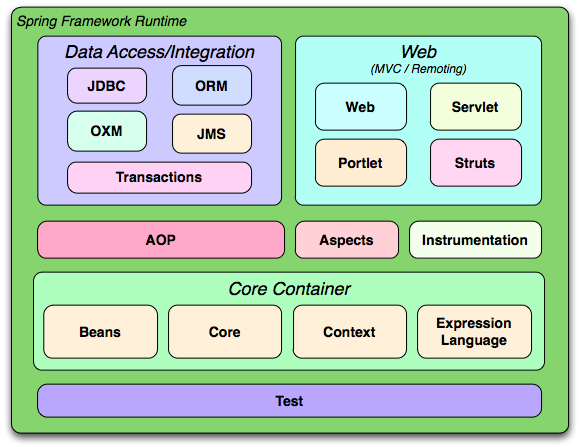Welcome to the "Learning Journey" series. This space is my personal archive where I share insights and discoveries from my explorations into new tech territories. we're going to dive into a game-changer in the world of Java-based enterprise applications: the Spring Framework.
1. Background: The Evolution of Spring
At the beginning of enterprise Java, EJB (Enterprise JavaBeans) was the dominant choice for building robust enterprise applications. However, the complexities of EJB did not blend well with modern architectural trends, which required a simpler, more lightweight solution. This need led to the birth of the Spring Framework.
Over time, Spring has evolved from a remedial framework to combat the complexities of EJB to a comprehensive suite of projects addressing a wide array of enterprise Java needs. It now includes everything from a security framework to a full-fledged MVC web application framework.
2. Understanding the Spring Framework
The Spring Framework is a comprehensive, yet lightweight solution for building enterprise applications in Java. It emerged as a response to the intricate nature of enterprise application development, providing a simpler, more flexible, and modular approach.
3. The Pillars of the Spring Framework
The Spring Framework is built upon several key principles:
- Inversion of Control (IoC): Also known as Dependency Injection (DI) and Dependency Lookup (DL), IoC shifts the responsibility of managing dependencies from the programmer to the framework itself. This results in more modular and testable code.
- Plain Old Java Object (POJO): Spring advocates for the use of POJOs, which are straightforward, reusable, and testable Java objects that aren't bound to a specific framework.
- Aspect-Oriented Programming (AOP): AOP is a programming paradigm that aims to increase modularity by separating cross-cutting concerns. It does this by breaking down the program logic into distinct parts (called "aspects"). For example, logging is a concern that cuts across multiple methods, classes, and layers in an application. Using Spring AOP, you can separate this logging concern from the core business logic, making the code cleaner and easier to maintain.
- Model-View-Controller (MVC): The Spring MVC web application framework provides a clear separation of concerns among the roles in the application, and is a highly flexible, robust alternative to traditional heavyweight frameworks.
- Modularity: The modularity of Spring allows developers to use only the components they require, instead of being forced to adopt the entire framework.
4. Inside the Spring Framework Architecture
 |
| https://docs.spring.io/spring-framework/docs/3.0.x/spring-framework-reference/html/overview.html |
The Spring Framework has a layered architecture comprising various well-structured modules like Core Container, Data Access/Integration, Web, AOP (Aspect Oriented Programming), Instrumentation, and Test. A detailed diagram of the Spring Framework architecture can help visualize how different modules work together and allow developers to keep their applications lightweight and optimized.
5. Introducing Spring Boot
Spring Boot is an extension of the Spring Framework, designed to simplify the initial setup and configuration of a new Spring project. With its opinionated approach to the Spring platform and third-party libraries, Spring Boot allows developers to start projects quickly, making it an ideal choice for developing microservices.
6. Java EE vs. Spring Boot: A Comparative Look
| Feature | Java EE | Spring Boot |
|---|---|---|
| Startup Time | Can be lengthy due to application server startup | Extremely fast, ideal for microservices |
| Configuration | XML based, can be verbose | Convention over configuration, minimal setup |
| Dependency Injection | Uses CDI | Uses Spring's Dependency Injection |
| Data Access | Uses JPA | Supports JPA and Spring Data |
| Flexibility | Bound to the specifications | Highly customizable |
| Learning Curve | Steeper, requires understanding of various specifications | Easier to start with due to auto-configuration and embedded server |
| Community and Support | Supported by various vendors, larger community | Robust community support, primarily driven by Pivotal |
| Packaging and Deployment | Usually requires an application server for deployment | Standalone applications with embedded servers, easy to deploy |
| Microservices Support | Can be more complex to setup | Built with microservices in mind |
Java EE (Enterprise Edition) provides a standardized API and runtime environment for building and running large-scale, multi-tiered, scalable, reliable, and secure network applications. Despite the comprehensive solution offered by Java EE, Spring Boot brings a more
lightweight, flexible approach, and has managed to simplify many of the complexities that exist in Java EE. Thus, Spring Boot has gained significant popularity among developers looking for a streamlined and efficient development process.
In the next part of my Learning Journey, I will delve into more interesting features. Stay tuned!

No comments:
Post a Comment